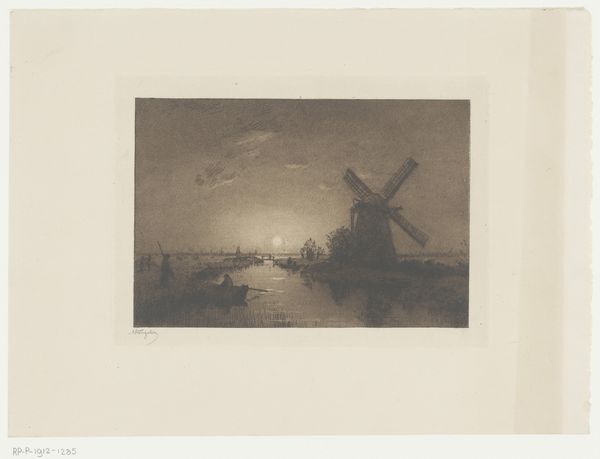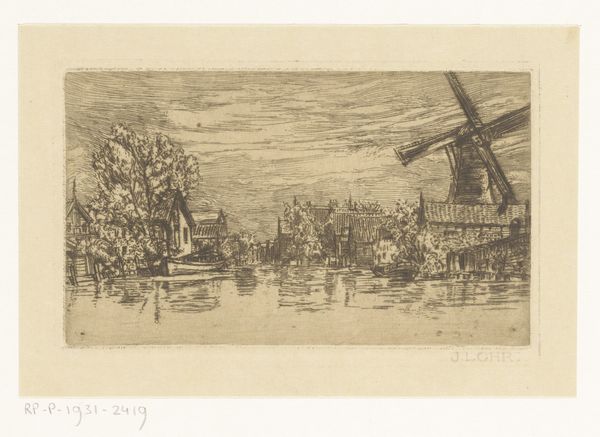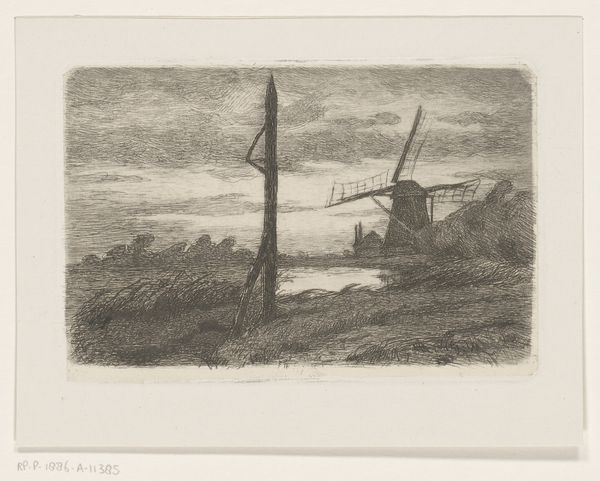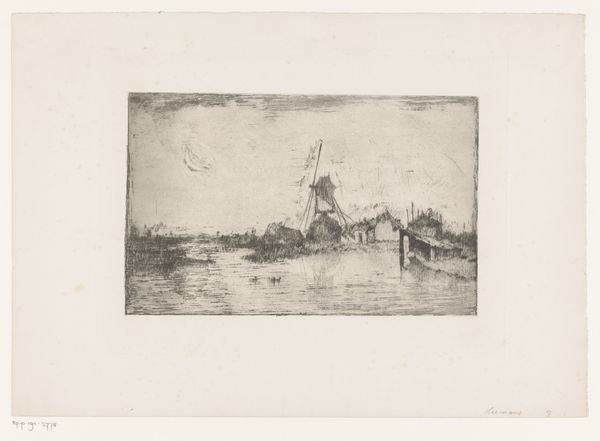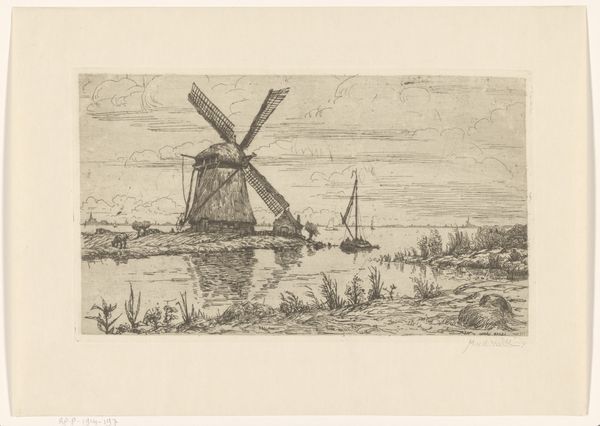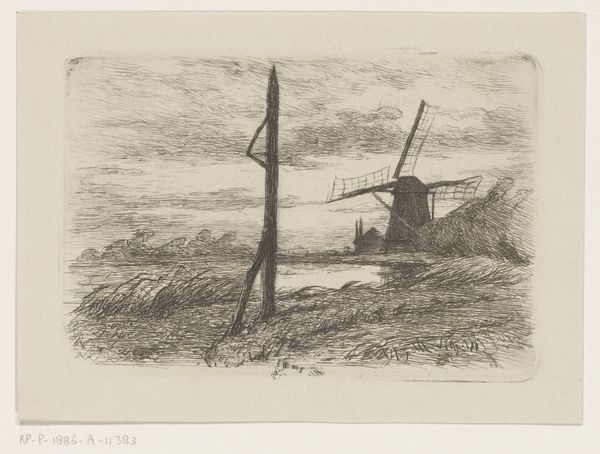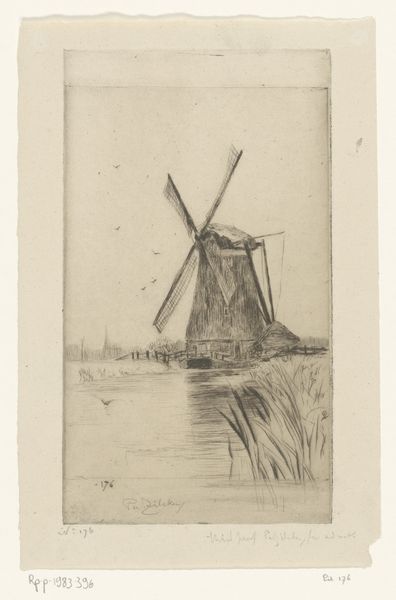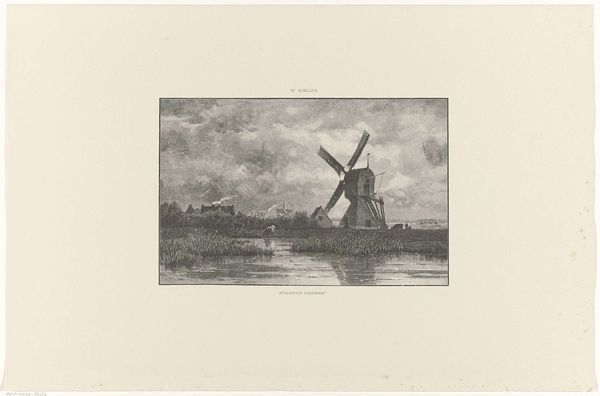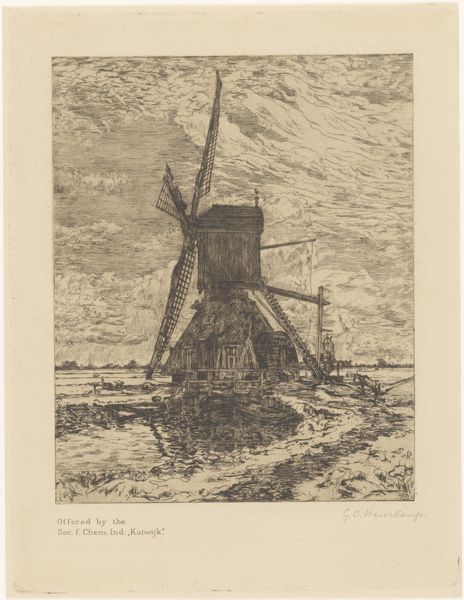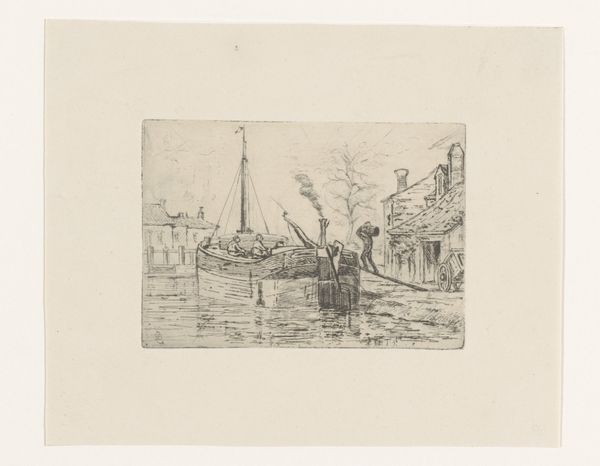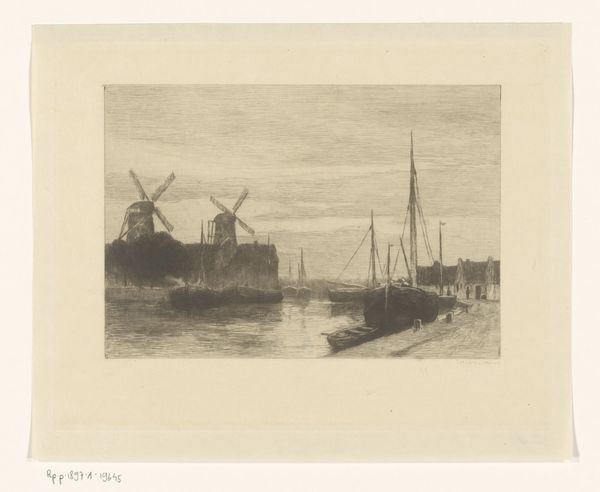
print, etching, paper
#
dutch-golden-age
# print
#
etching
#
landscape
#
paper
#
realism
#
monochrome
Dimensions: height 175 mm, width 229 mm
Copyright: Rijks Museum: Open Domain
Curator: Welcome! We’re here looking at "Singel met bomen en molens langs het water," an etching on paper by Jan Hillebrand Wijsmuller, likely created sometime between 1865 and 1925. Editor: Immediately, I'm drawn to the atmospheric stillness. The monochrome palette evokes a strong sense of place, and of quiet labor along this waterway. It feels somber yet very beautiful. Curator: Absolutely. The etching captures a slice of Dutch life, where windmills aren't just picturesque but fundamentally tied to the region's economic and social fabric. Consider how these structures controlled waterways and powered industry. Editor: The textures are really speaking to me; you can almost feel the coarseness of the aged wood of those windmills and the subtle ripple of the water. Given the emphasis on printmaking, how does this challenge more traditional forms of ‘high’ art making in that time? Curator: In prioritizing etching, the artist elevates the print form to a place of regard. I can’t help but wonder, in observing this particular selection of windmills, does it represent the artist’s relationship to industry, and thus, potentially the working class? Editor: I like that! It’s about acknowledging labor, moving beyond simply romanticizing rural landscapes to examining what goes into shaping and sustaining those very lands. And I can’t help but consider—in the age of industrialization creeping through the Netherlands, these old windmills also would’ve carried different weights. Curator: Precisely, those contrasts invite reflections on a changing social landscape. Also think of how the artist situated the waterway in a central, almost dominant visual role. As an intersectional narrative of place, can it serve to represent social access for various people in Dutch society? Editor: So well observed. Now I’m wondering about the intended audience of such works at the time. Where these artworks were headed for more ‘private’ or commercial venues of dissemination or display? Curator: Exactly—examining that circulation unveils further layers of the work’s socio-political presence. Thinking about the work now, it feels less like a simple image and more a historical marker, and a marker of working practices in Dutch society. Editor: I concur, that's a fitting way to interpret it. And by looking at the artist’s materials and his methods, we better comprehend that the way these images are shared is not just aesthetic but imbued with socio-political dimensions as well.
Comments
No comments
Be the first to comment and join the conversation on the ultimate creative platform.
